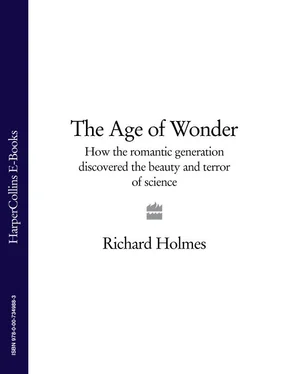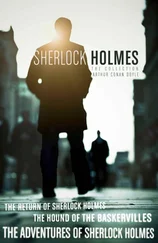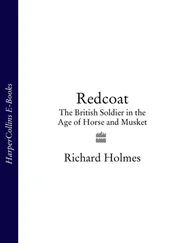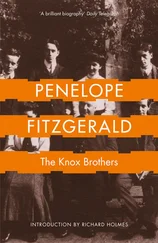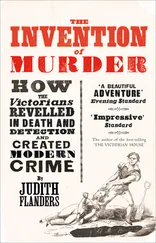The young John Keats remembered an organised game at his school in Enfield, in which all the boys whirled round the playground in a huge choreographed dance, trying to imitate the entire solar system, including all the known moons (to which Herschel had by then added considerably). Unlike Newton’s perfect brassy clockwork mechanism, this schoolboy universe-complete with straying comets-was a gloriously chaotic ‘human orrery’.
Keats did not recall the exact details, but one may imagine seven senior boy-planets running round the central sun, while themselves being circled by smaller sprinting moons (perhaps girls), and the whole frequently disrupted by rebel comets and meteors flying across their orbits. Keats was later awarded Bonnycastle’s Introduction to Astronomy as a senior school prize in 1811. Reading of Herschel, he enshrined the discovery of Uranus five years later in his great sonnet of 1816, ‘On First Looking into Chapman’s Homer’. 154
Once they had moved to Datchet, Herschel and his brother Alexander started an exclusive business in the manufacture of high-quality reflector telescopes. The first five of them, all seven-foot reflectors, were ordered by King George as royal gifts, and although never fully paid for by the Crown office (they were priced at a hundred guineas each), they had the invaluable effect of making Herschel the royal telescope-maker, ‘By Appointment’. All telescopes, whatever their size, were individually constructed to order, took three or four weeks to make, and had an individual price, usually quoted in guineas. Herschel would supply them either in kit form or fully assembled in beautiful mahogany cases, with spare mirrors and a selection of eyepieces. Although every one was handcrafted, his immense energy achieved something like mass-production. Over the next decade he made 200 mirrors for the popular seven-foot telescope, 150 for the ten-foot, and eighty for the big twenty-five-foot, although not all of these were sold. 155
Prices rose steadily. The renowned seven-foot telescope was usually sold in kit form for thirty guineas, but Herschel gradually raised even the kit price to a hundred guineas, the figure he quoted to the German astronomer Johann Bode in Berlin. 156 Eventually a twenty-foot in kit form sold for 600 guineas. The luxury ten-foot reflector, complete with polished mahogany case, patent adjustable stand, a selection of eyepieces and a spare mirror, cost a princely 1,500 guineas. 157 Indeed the more expensive models were sold mostly to German princes, and models also went to Lucien Bonaparte (Napoleon’s brother) and the Emperor of Austria. 158 Probably the most expensive commercial telescope that Herschel ever made was commissioned by the King of Spain for £3,500, and delivered to the Madrid Observatory in 1806. 159 Scores of Herschel’s telescopes were eventually sent all over England and Europe, and he personally delivered one on behalf of King George to the state observatory at Göttingen in 1786. 160
Gradually more and more visitors began to descend on the observatory at Datchet. Caroline started to keep a neat, double-columned visitors’ book, rather as if she were recording star observations, which in a sense she was. In spring 1784 the dying Dr Johnson sent the young Susannah Thrale (Mrs Thrale’s third daughter) on a visit, advising her to cultivate an acquaintance with Herschel: ‘He can show you in the night sky what no man before has ever seen, by some wonderful improvements he has made in the telescope. What he has to show is indeed a long way off, and perhaps concerns us little, but all truth is valuable and all knowledge pleasing in its first effects, and may subsequently be useful.’ 161
Caroline wrote vivid accounts of their routine of all-night star observations, or ‘sweeps’. 162 Herschel’s technique of ‘sweeping’ did not-as the term seems to imply-involve moving the telescope laterally, which was always a tricky operation with the bigger reflectors. Instead it was kept on the meridian, and moved slowly up and down, while the constellations turned through the field of observation as the stars moved steadily across the night sky. As this motion is caused by the earth itself rotating on its polar axis, so the telescope is effectively ‘sweeping’ the heavens like some immensely long broom, or the finger of a searchlight. By this method Herschel could progressively cover the entire night sky in a series of small strips, each covering about two degrees of arc. 163 The technique was far more accurate than any other stellar observation that had ever been undertaken before in the history of astronomy. But it was also immensely slow and painstaking. A complete sweep could take several years to complete.
During this time Herschel became so familiar with every part of the sky that he could identify stellar patterns, and any new objects, with amazing speed and precision. Perhaps his musical training helped him here, as much as his painfully self-taught mathematics. As he suggested himself, he could read the night sky like a skilled musician sight-reading a musical score. Or more subtly, the brain that was trained to recognise the highly complex counterpoints and harmonies of Bach or Handel could instinctively recognise analogous stellar patternings.
Herschel became fascinated by both the physics and the psychology of the observation process itself, and later wrote some of his most fascinating papers about it. From 1782 he began to record the many physical tricks his eyes could play, and also began to study the illusions of night observation. On 13 November, while trying to identify a new double star in Orion, he dictated a careful note to Caroline:
Following 10 Orionii. I saw very distinctly double at least a dozen times pass through the whole field of view with both eyes, but was obliged to darken everything. I suspected my right eye to be tired, & know it to see objects darker. Therefore tried the left first, & saw it immediately pass thro’ the field double several times. Saw the same afterwards with the other eye…No star twinkled except Syrius, & those as low. The evening exceptionally fine for telescopes. 164
The more he was challenged by professional astronomers, the more Herschel became conscious of his ‘art of seeing’, and how it needed explaining afresh. ‘The eye is one of the most extraordinary Organs,’ he repeatedly told his correspondents. Classical physiology was wrong. Visual images did not simply fall upon the optic nerve, in the same sense that they fell upon a speculum mirror. The eye constantly interpreted what it saw, especially when using the higher powers of magnification. The astronomer had to learn to see, and with practice (as with a musical instrument) he could grow more skilful: ‘I remember a time when I could not see with a power beyond 200, with the same instrument which now gives me 460 so distinct that in fine weather I can wish for nothing more so. When you want to practise seeing (for believe me Sir,-to use a musical phrase-you must not expect to see at sight or a livre ouvert ) apply a power something higher than what you can see well with, and go on increasing it after you have used it for some time.’ 165
Caroline later assembled an index of all Herschel’s remarks on practical observation. Under ‘Trials of Different Eyes and Seeings’ she listed such topics as the distortion effect of ‘looking long at an object etc’, the need to progress from lower to higher powers of magnification, the fact that ‘different eyes judge differently of [the same] colours’, that ‘eyes tire’ without the observer noticing, and that ‘we see things always smaller at first, when difficult to be seen’. 166
Under another heading, ‘Airs and Situations’, she listed the particular locations and atmospheric conditions which affected a telescope. These were not always self-evident. The atmosphere itself had ‘prismatic powers’, and distortions could be produced by ‘field breezes’, viewing ‘over the roof of a house’, or standing ‘within 6 or 8 feet of a door’. Surprisingly, because of thermal ripples rising from the ground, ‘evenings tho’ apparently fine, are not always good for viewing’. By contrast, ‘moist air was favourable’, and damp or rain, even certain kinds of fog, were ‘no hindrance to seeing’. It was possible to observe in conditions of severe frost, or even falling snow, provided the mirrors were kept clear of ice. 167
Читать дальше
